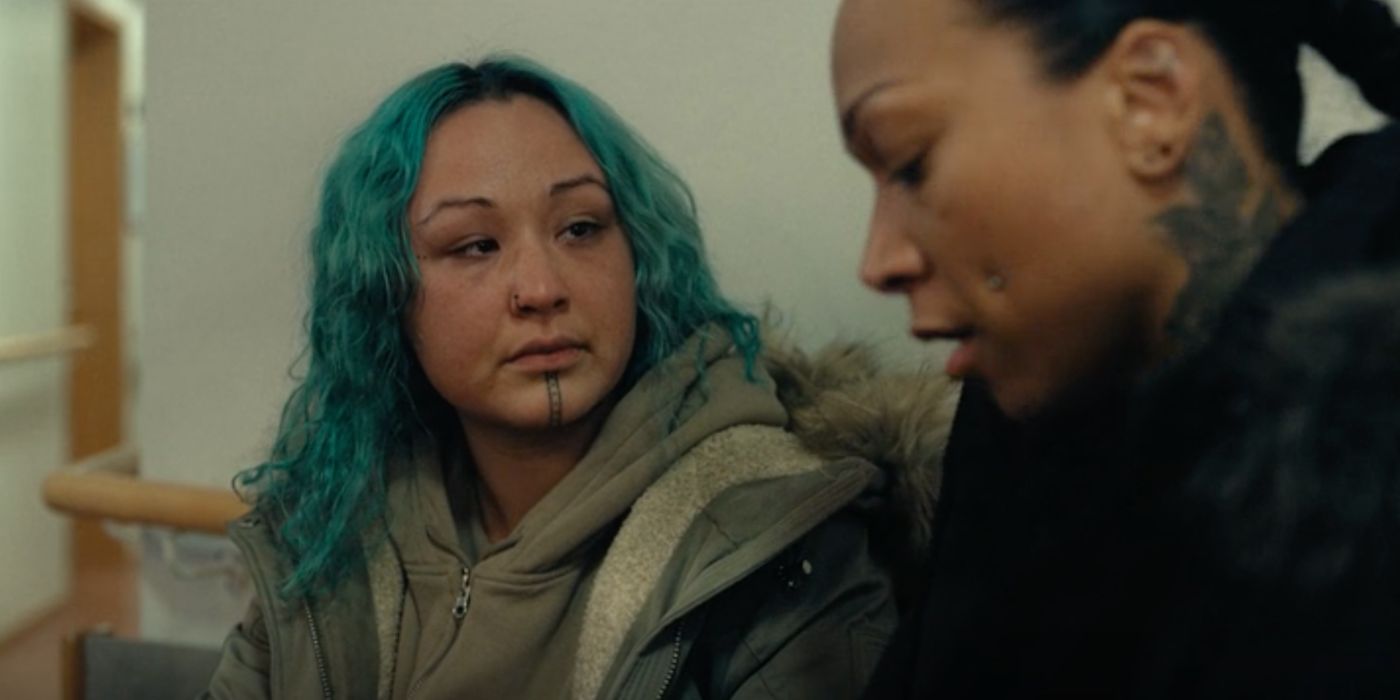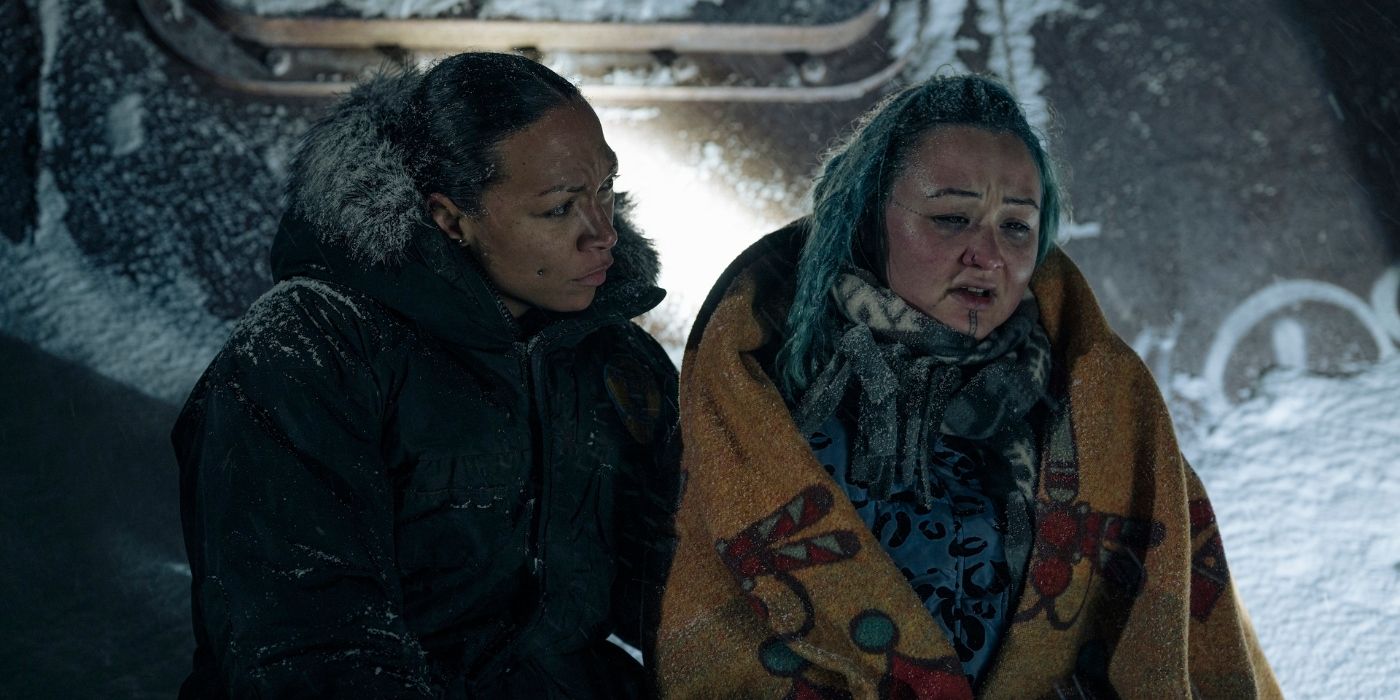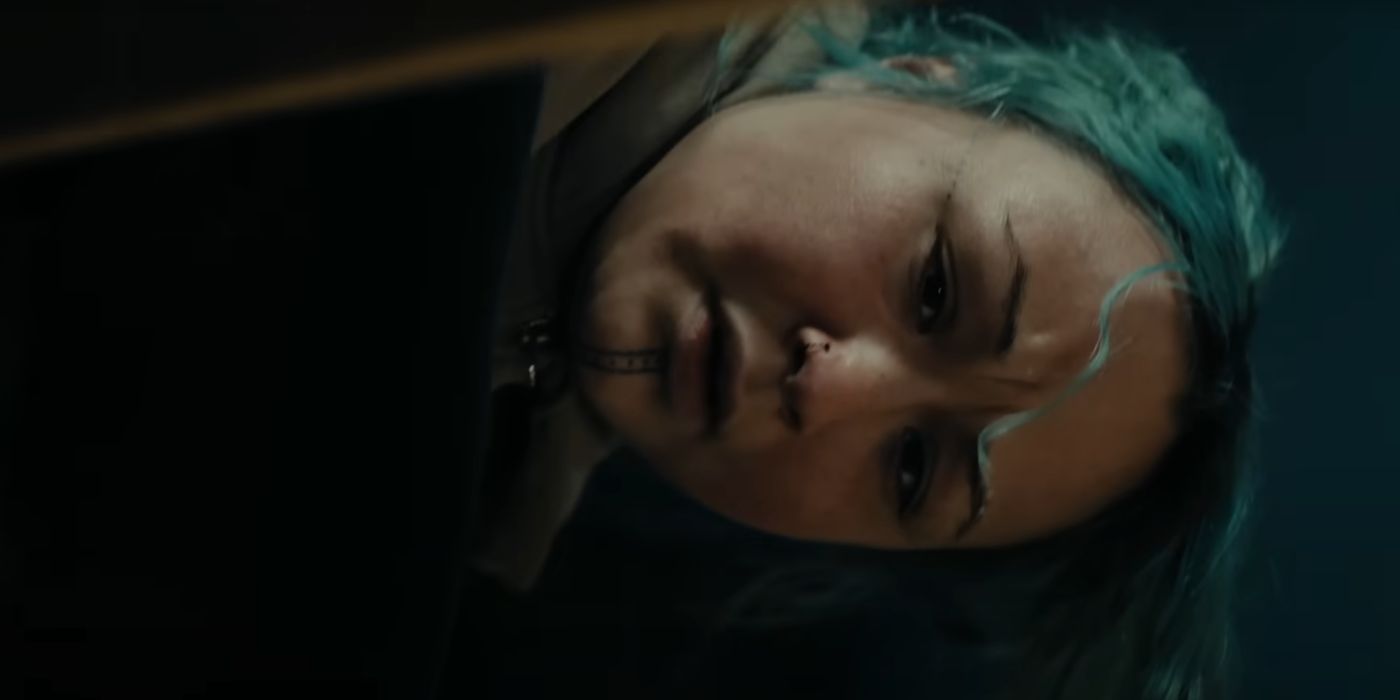Throughout the first several episodes of Issa López‘s grim crime thriller True Detective: Night Country, starring Jodie Foster and Kali Reis, there have been several references to the chin tattoos many characters have in Ennis, Alaska. We have seen the murder victim in that key video clip, Annie Kowtok (Nivi Pedersen), bearing the three marks on her chin, as she makes that found footage cry for help. Police Chief Liz Danvers’ (Foster) rebellious stepdaughter Leah (Isabella Star LaBlanc) has also worn a temporary tattoo of similar markings, much to her mother’s chagrin. Meanwhile, Trooper Evangeline Navarro’s (Reis) troubled sister, Julia (Aka Niviâna) has a distinctive tattoo extending from her lower lip to the bottom of her chin. What do these tattoos mean, and why are they important to the story being told in Night Country?
What Does the “Three Pine” Tattoo Represent in ‘True Detective: Night Country’?
In Night Country, when Liz Danvers demands that Leah remove the temporary tattoo from her chin, her stepdaughter refers to its significance as reflecting a young girl trying to find her voice and power. Danvers chalks up Leah’s interest in the markings to little more than a fad, or the fact that she might be buying into some radical movement of the Indigenous women of the area. But there is much more to what the chin tattoos mean to the Indigenous tribes of the Alaskan region than just a young girl falling in with a group of rebellious teens trying to make a statement. The lines and the number of lines have a much broader meaning.
Per Vogue, these marks are a tradition that dates back more than 10,000 years, though different cultures refer to them by different names — Yidįįłtoo, or Tā Moko for the Maori, or Kakiniit, which is mentioned in True Detective: Night Country, for the Inuit. Lars Krutak, a tattoo anthropologist and research associate at the Museum of International Folk Art, says that the marks, which are often represented by three lines on the chin, were historically used to signal what tribe someone originated from, denote warrior status, or even serve as a symbol of healing. They’re also meant to serve as a rite of passage for young women. “The width and spacing of a woman’s chin tattoos differentiated what group they came from.” Some modern Inuit women are inking their faces to get in touch with the holy ritualism of their ancestors, while others find empowerment in the markings as it gives them a better sense of where they come from.
Indigenous Customs Are a Major Part of ‘True Detective: Night Country’





In the show, Liz Danvers is portrayed as being closed-minded and insensitive about the plight of these native people. Evangeline Navarro continually reminds her that the sacred tattoos are more than just a passing fad and appear to be much more consistent with what real-life indigenous Alaskan women are echoing. From Leah’s experiences with the ritualistic marks to Julia’s struggles, both of which are against the backdrop of Annie K’s mysterious murder, there really isn’t any aspect of True Detective: Night Country that doesn’t play up the significance of Indigenous culture.
Issa López has steeped this season in the experiences and belief systems of Indigenous people, both in Danvers’ and Navarro’s personal lives and at the center of their investigation. Serving as a midwife and local activist before her death, Annie K. is considered an inspiration to the young Indigenous women of Ennis, including Leah. A particularly eye-opening experience for Navarro in Episode 3 via flashback gives us a better understanding of her connection not only to Annie K. but to their general customs. That is what makes her and Danvers a perfect tag team to hunt down whatever it is that is killing the people of Ennis.
With each episode, the audience can see the evolution of the two investigators. Danvers is becoming much more open-minded about the things she doesn’t believe in. The scene where she walks into a memorial service for a stillborn baby is an excellent if not sobering example of how she is witnessing the human element more and more. Meanwhile, Navarro is on her own journey of self-discovery regarding her heritage. She never even knew her own Inupiaq name at birth, and her discussions with Rose Aguineau (Fiona Shaw) are some of the most enlightening exchanges for both Navarro and the viewer regarding the history behind what we are witnessing. It also provides more information on Julia and whether she was ill-prepared to handle mystical messages or just emotionally vulnerable.
Danvers keeps looking at that video of Annie’s final seconds, hoping to glean a connection, but might be better served by heeding Navarro’s advice. She needs to further her understanding of what Inupiaq customs, including these chin tattoos, mean to a younger generation, including her own daughter, Leah, who is struggling to find where she belongs in the small community. Season 4 of True Detective helps to counter the stigma associated with the Kakiniit tradition, even if Danvers’ resistance to the chin tattoos is representative of a more ugly pushback from the non-Indigenous community. Between Danvers’ potential enlightenment and Navarro inching closer to her own heritage, perhaps these arcs will come full circle as we get closer to the truth with just one episode remaining.




